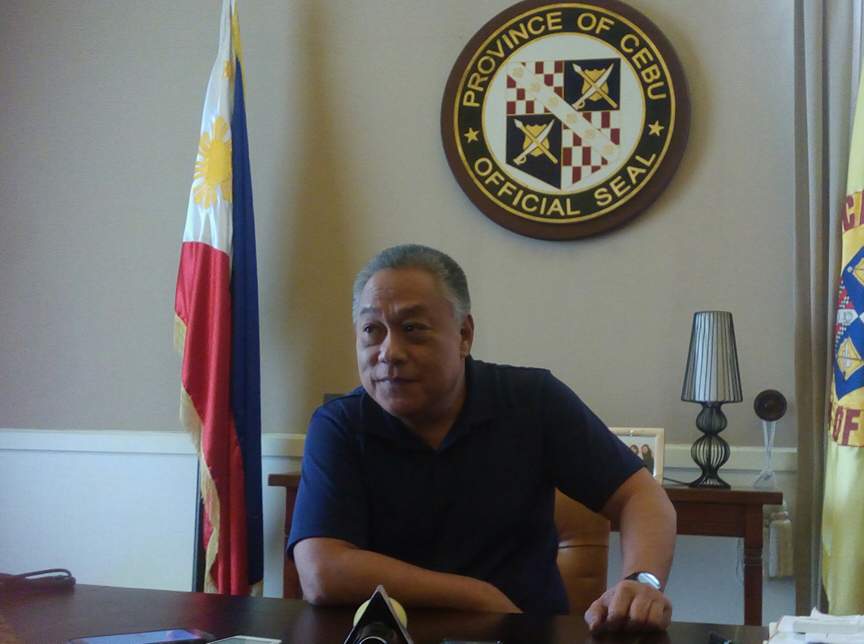With the fate of the Bus Rapid Transit (BRT) still in limbo, Cebu Gov. Hilario Davide III yesterday called on concerned agencies to stop stalling the project and implement it right away, as it has been in the pipeline far too long.
“Dugay na man gud ng BRT gyud. I don’t see any reason nganong dili dayonon na (The BRT has been there for long. I don’t see any reason why it shouldn’t push through). That has been studied, and there’s a full-blown feasibility study compared to the LRT (Light Rail Transit), which doesn’t have one,” he said.
But Davide likewise stressed his support for an LRT system in Cebu City and province as a long-term solution to its traffic problems, adding that both mass transport modes would not only complement each other but would greatly benefit Cebu’s commuters.
“They can go together. They can complement each other. But now, the BRT should really push through. It’s already on the table, and the only thing needed is to execute it. Then the LRT will follow,” Davide told reporters yesterday.
The National Economic and Development Authority-Investment Coordination Committee (Neda – ICC), the country’s highest body that evaluates major national projects and recommends its approval to the President, held in abeyance the final go signal for the BRT after Department of Transportation (DOTr) Secretary Arturo Tugade recommended that it be scrapped.
Tugade, in a letter addressed to Neda-ICC Chairperson and Finance Secretary Carlos Dominguez dated April 11 and discussed in the Neda-ICC meeting on April 25, cited a report from an inter-department task force, which found that the project has become irrelevant because of Cebu City’s existing narrow roads and the rise in the project cost from the original P10 billion to P17 billion, making the BRT too costly to implement now.
In response to Tugade’s recommendation, the Neda-ICC instead decided to ask the DOTr to come up with a short-term solution to the traffic problem in Cebu as an alternative of the BRT. The DOTr was given 10 days to come up with an alternative.
For Cebu City Mayor Osmeña, the main proponent of the BRT project, the decision was a welcome move because it means the Neda-ICC is not about to scrap his project without a clear short term alternative in place, even if the DOTr, the implementing agency, now wants to give it up.
“It’s a step towards the right direction because now there’s transparency. It’s good that they have to be more transparent now instead of saying theirs is ‘more superior’ to the BRT,” in apparent reference to the LRT that is being backed by Presidential Assistant for the Visayas Michael Dino.
Osmeña believed Tugade’s decision was influenced by Dino who had long batted for the cancellation of the BRT in favor of the LRT.
Osmeña, however, said the LRT could not be the answer to what the Neda-ICC wanted since the DOTr was being asked to provide a short-term solution to Cebu’s traffic woes. And, right now, nothing can replace the P17-billion BRT project as a short-term solution to the worsening traffic congestion in Cebu, the mayor said.
The BRT was conceptualized by Osmeña in the late 1990s and approved for implementation in 2012 at a cost of P10.6 billion, to be funded by the World Bank after it completed a full feasibility study on the project. As the project got stalled, however, the cost escalated to P16.3 billion last year.
The project is now estimated to cost at least P17 billion.
Cebu Daily News contacted the DOTr for details on how they would proceed with finding a short-term alternative to Cebu’s traffic concerns within the 10-day deadline set by the Neda-ICC. But a representative of DOTr, who asked not be named for lack of authority to speak to the media, only said they would announce their decision soon.
Dino meanwhile revealed that his office has been closely coordinating with DOTr to meet the 10-day deadline set by the Neda-ICC.
He said they would present both short-term and long-term solutions to Cebu’s traffic problems.
Dino supported the P155-billion LRT project of a Chinese-led consortium that promised to begin the project’s implementation by next year if it gets the nod from the DOTr.
But Neda Secretary General Ernesto Pernia, who co-chairs the Neda-ICC, noted it would not be possible for the LRT project to start next year since the consortium’s representative only submitted a pre-feasibility study.
Pernia, who was in Cebu last week, said the whole process — from the conduct of a full feasibility study up to the point when implementation could begin — would usually take about ten years.
But Dino said a Cebu LRT could be done sooner than expected if Cebu will be included in the areas to be covered by the Traffic Crisis Act that will give President Rodrigo Duterte the emergency powers to solve the traffic crisis in the country.


